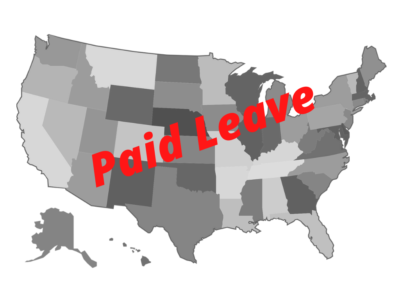Government-administered paid leave should be allowed to succeed or fail in the states.
People imagine the policy to be a sophisticated, finely tuned program. It is not. It promises to reduce or eliminate conflicts and friction for working caregivers and those with chronic illnesses. It will not. The policy is essentially an experiment. Because it boldly tangles with the management practices of businesses in a complex economy, it extends its tentacles in multiple directions with every decision it influences. To expect it to eliminate frictions rather than displace them somewhere else is naive.
No one knows how much this will cost businesses.
It is unprecedented in its scope and unique in its context. Special interests have made sure all of their purposes and target populations are adequately covered. It may give extraordinary discretion to workers to exercise the benefit with little accountability, leaving others to pay the price.
And because our legal infrastructure has grown quite powerful and our business climate litigious, the policy will behave differently here in the US than anywhere else – a heavy risk that advocates fail to understand or choose to ignore.
Volumes of proponent’s academic literature cite projected benefits to workers, yet how this will work in practice is ultimately conjecture. There is no data from the future. There is a poverty of data from the present as well. Data on the costs to businesses of absence, both direct and indirect, is muddy, highly variable, and private.
The US is too big.
Administration and oversight by a distant politically-controlled bureaucracy will cripple risk management. The design of the policy deliberately disarms risk management to pursue an imagined ideal that is thought to be in the public interest. But it displaces interpersonal agreements with directives and depersonalized transactions. It will deflect and defeat efforts by individuals to seek better solutions and leave them passive in the face of captured resources and unadaptable rules.
It is not reaching its policy goals
The current version of this concept goes far beyond its celebrated maternity or parental leave, which is also the most benign, more clearly defined, and perhaps the easiest to justify of the benefits. Yet even government-sponsored maternity leave poses clear risks of negative impacts on women’s earnings and career paths. Recent studies have tried to alert policymakers to these risks, but advocates have responded with willful blindness.
To the frustration of proponents, existing programs are not delivering equitable outcomes. Lower skilled workers are not exercising the legal right as often as higher-skilled, higher-income workers. This is because at its core, the policy seeks to impose universal conditions on all employee/employer relationships regardless of their comprehensive agreements that balance a wide range of needs and expectations. The power of a mandate goes only so far to override relationships and agreements understood by two parties for mutual benefit.
There are effectively no exits from failure
The broad network of interest groups will likely protect the policy once implemented. It will follow an irreversible growth path as have other entitlements. John Cogan makes the broken and entrenched process clear in his excellent book, The High Cost of Good Intentions, a History of US Federal Entitlements, as does Steven Teles in his insightful essay, Kludgeocracy.
What too many people fail to understand is that while smaller less diverse countries, like the Nordic country, Sweden, might be able to say, We got that wrong, let’s rethink that, 1 Successful modification here in the US to pull back the policy due to economic harm will be unlikely.
We are learning all the time
There is nothing so constant as change. We must guard against a premature commitment that will limit our options to do better. Work/life balance and our aspirations change with every generation and with every advance in technology. This policy model will not leave us with options. That is a terrible threat to the future health of our workforce and economy.
1 Sweden’s Lessons for America, an essay by Johan Norberg, a senior fellow at the CATO Institute, explains how Sweden was able to pull back some of the policies that were delivering poor outcomes. The associated documentary is available for viewing here.



 Senate Bill 176 – Workplace Harassment – Key Provisions
Senate Bill 176 – Workplace Harassment – Key Provisions